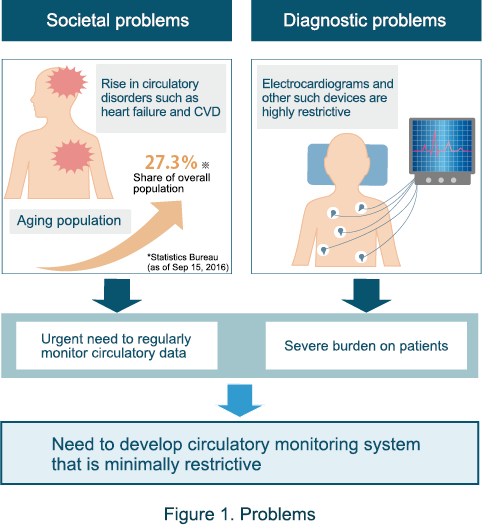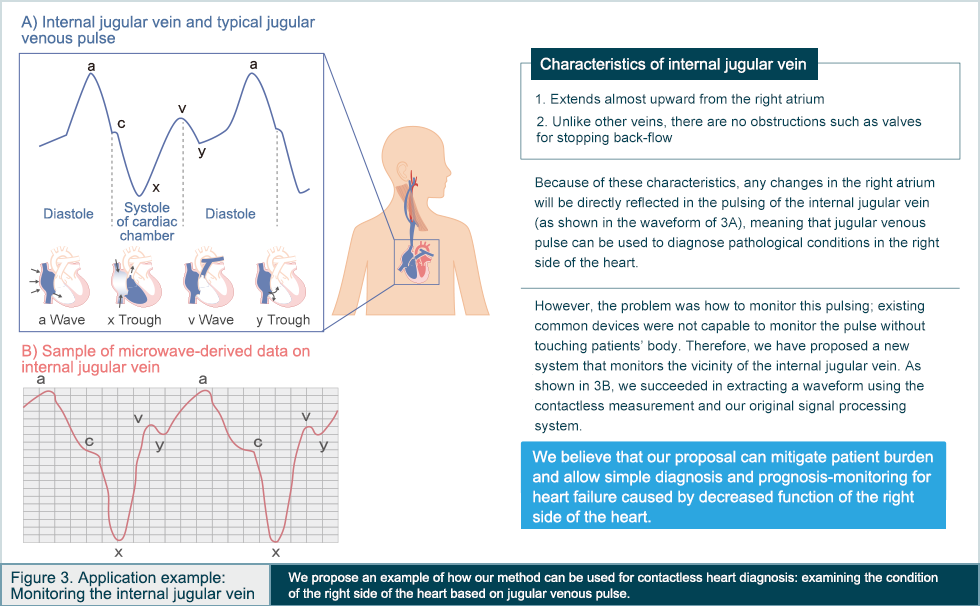
According to WHO reports, circulatory disorders, such as heart failure and cardiovascular disease (CVD), are on the rise all over the world, including Japan.
This issue is named “heart failure pandemic” because of its serious situation. It is becoming increasingly urgent to come up with measures to prevent, diagnose, and treat these conditions.
On the other hand, there is also a problem with electrocardiograms and other devices used to monitor a person’s physiological information; such devices feature electrodes and wiring, making them very cumbersome and restrictive, so they tend to impose a burden on patients.
Therefore, our research group has examined a non-contact, non-invasive, and thus minimally encumbering method that can be used in everyday settings on an ongoing basis. This method makes use of safe radio waves (microwaves) at the level in which it is used in mobile phones.
As the heart beats, it creates subtle vibrations on the surface of the body. Our system measures these vibrations by safe radio waves, and the measured values are then used to reach a diagnosis.
We have already achieved notable outcomes using non-contact devices. For example, we have succeeded in using heartrate and respiration data to monitor changes in the autonomic nervous system (stress fluctuation). We have also managed to estimate fluctuations in blood pressure.


